As part of a 2 day workshop on Climate. Activism. Museum. Cultural Dimensions of the Climate Crisis by the Museum academy of the Universal Museum Joanneum in June 2021, the Vienna (Weltmuseum Wien) TAKING CARE Team had the opportunity to visit serval local exhibitions highlighting topics surrounding the climate crisis and its effects, as well as offering potential impulses for solutions and actions. The curation, museums, art works and approaches were as diverse as the topics, ranging from land as a commodity, sustainable architecture, food waste, the fragile creation and relationship between nature and human beings, Climate Care, to the immersive installation Invocation for Hope, dark climate utopias and land grabbing and destruction of bio diversity. What all had in common though was the general sense of importance and urgency of the issue.
This article will offer an overview and personal insights into the exhibits. In part 2 of this series, will focus on the museums sustainable policies (#greenmuseum) in all areas and the Austrian Eco-Label.
1) Architektur Zentrum: 'Land for Us All'
– 19. July 2021
“The earth's surface is a finite resource, and soil is our most precious commodity. Careless or capital-driven treatment of this resource has massively changed the shape and function of our towns and villages in recent decades. In view of the threat of a climate catastrophe and rising housing prices, the question arises as to whether the current path, with maximum compromises and minimum adaptation, is still sustainable. An extensive and courageous land policy is called for, where is it?”
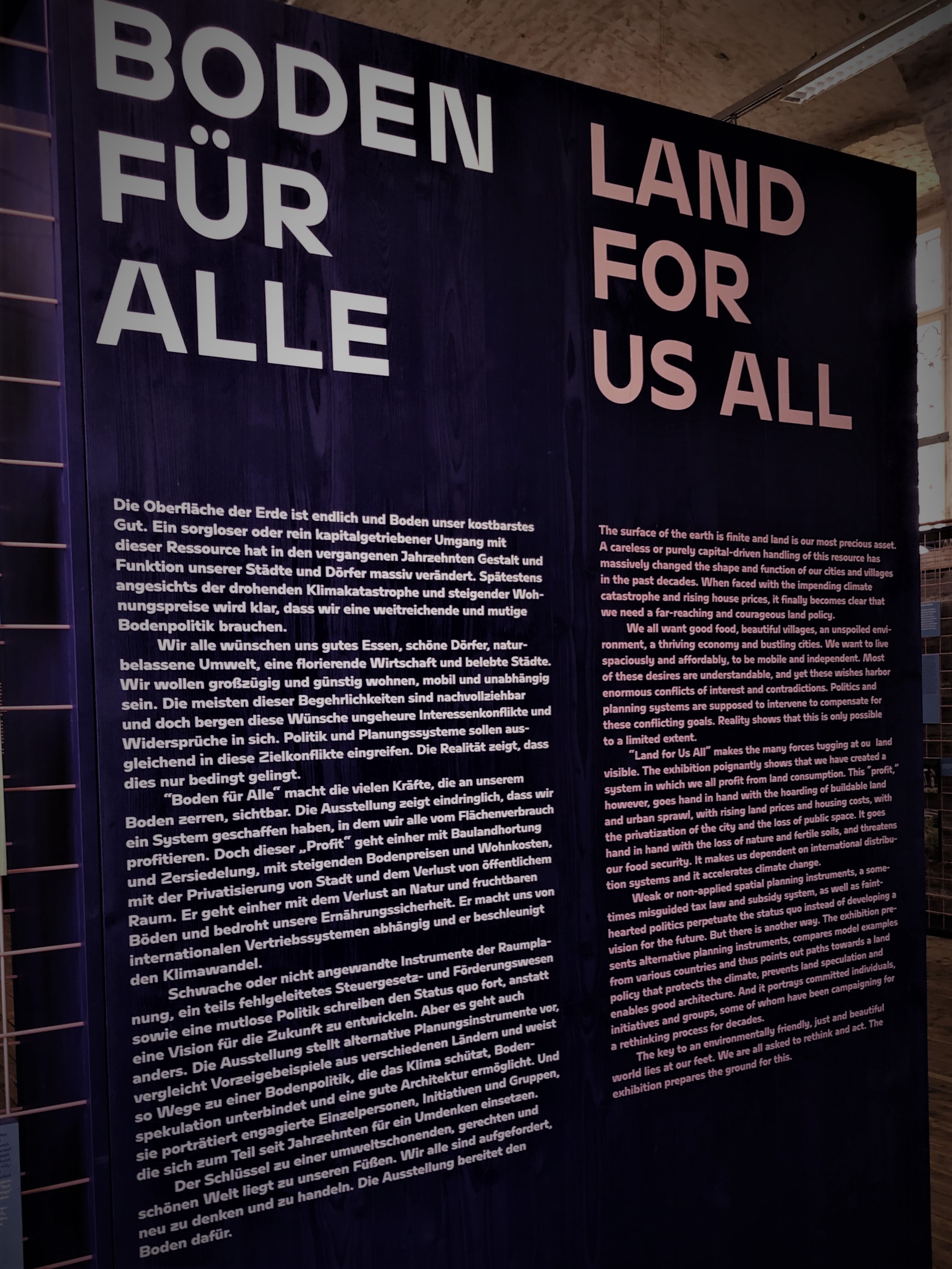
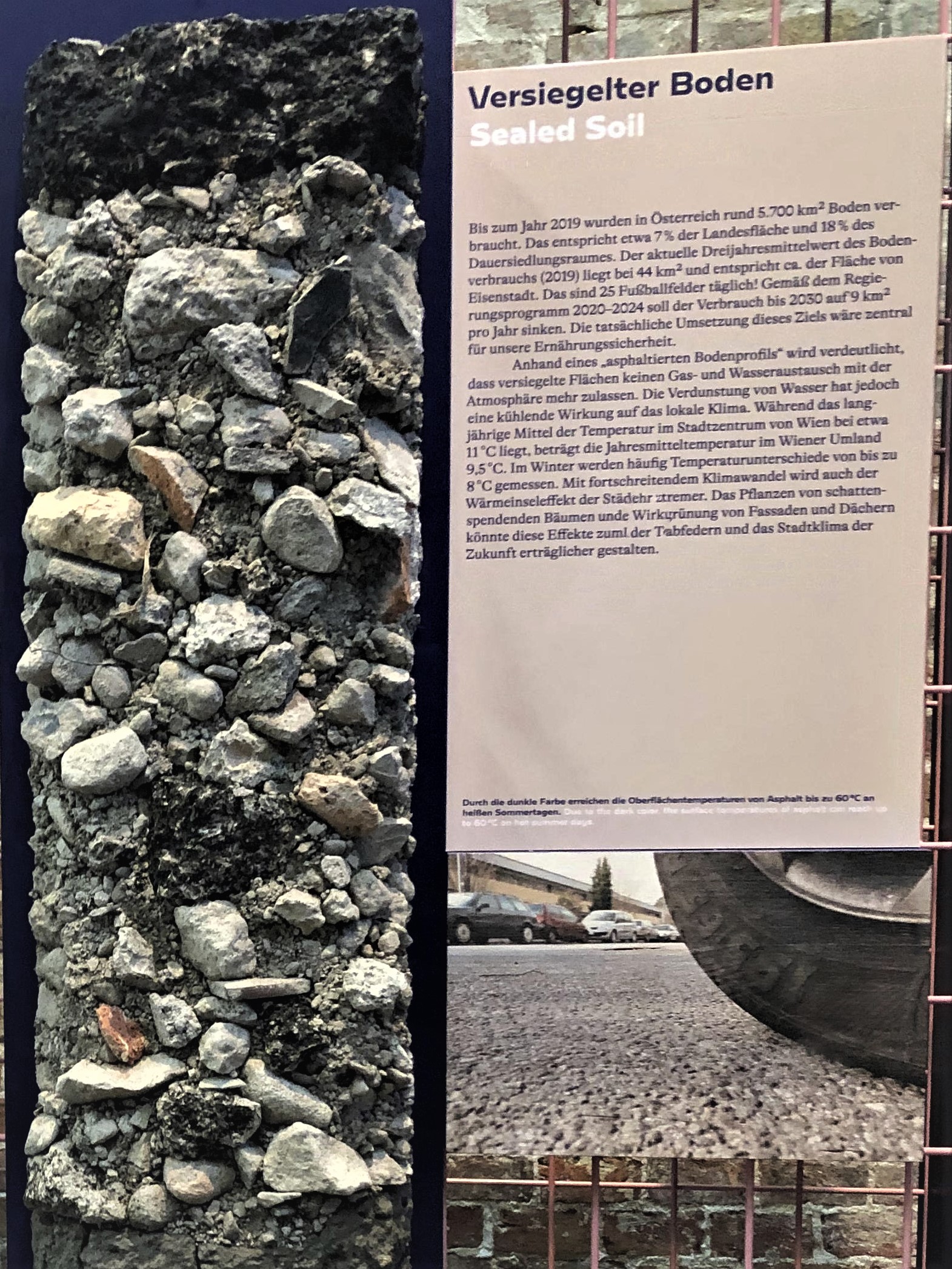
Curators: Karoline Mayer & Katharina Ritter, Az W
At the core of the Architekturzentrum Wien’s exhibitions and work are the social economic and ecological components of architectural projects. It is apparent to them, as an institution, that a radical rethinking in this field and society as a whole will be necessary to make a meaningful impact. This starts with making the public aware of some of the central issues in the overlap of architecture and the climate crisis, and in the second instance offering alternative visions, ideas and approaches and finally encouraging the audience to become active participants. One key topic in this intersection is the environmental and social effects of treating land as a commodity, by privatising and speculating with it. The exhibition ‘Land for Us All’ presents the results of two years of research and subsequently a boatload of data surrounding that topic. Ranging from the effects of sealed land on the enviroment, to regional building regulations (and its loop holes), the regional ratio of designated building land, housing prices, individual m² per person (and all those second homes) and much more.
In the final part (many) potential solutions as well as
alternative projects are presented and the visitor is left with a black board
of information how to get active (from food corps, to petitions and local NGOs),
which was an addition to the exhibition and initiated by the activists themselves.
All in all, the exhibition covers a very central topic but does it with, for my personal taste, an overwhelming amount of information and text, leaving nothing out and it, therefore, left me with a sense of exhaustion instead of activation.
'Land for Us All' has already closed its doors in Vienna but will be touring in a compact version in municipalities.
2) 'Critical Care- Architecture for a Broken Planet'
A planet in crisis. The earth in intensive care. Man-made environmental and social catastrophes are threatening to render the planet uninhabitable. The situation is critical and, dominated by the interests of capital, architecture and urbanism are caught up in the crisis. The exhibition 'Critical Care' shows how architecture and urbanism can contribute to repairing the future and keeping the planet and its inhabitants alive.
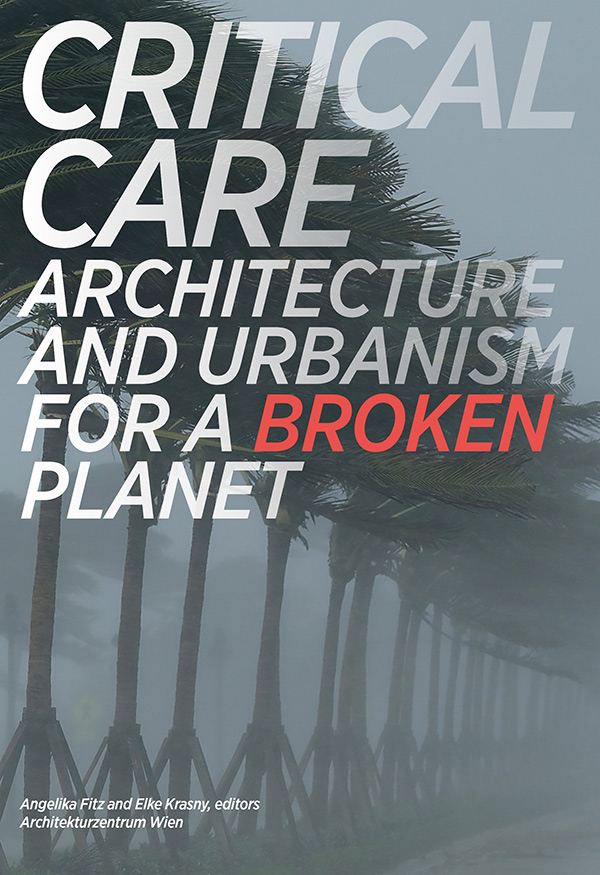
Curators: Angelika Fitz, Elke Krasny
In a brief presentation,
we were introduced to the past exhibition ‘Critical Care’ from 2019. Centred on the idea of a ‘caring architecture
and urbanism’ it introduced 21 examples from Asia, Africa, Europe, the
Caribbean, the USA and Latin America, showcasing revitalising, sustainable,
collaborative, social and inclusive of local knowledge and needs, projects.
As part of the educational activities in preparation for the exhibition, which later led into a project about new concepts for public spaces, a series of different workshops were held at Vienna Nordbahnhof (Social Design Studio and Rotor). A former freight railway station, which is now being rebuild into public and private housing. In dialogues with the neighbourhood, the concept of the “Freie Mitte” - a supposedly free urban wilderness as centre of the new developments was discussed and explored. The simultaneous research and the interventions on reusable materials, furthermore resulted in a public on-site exhibition. For more here
Check out the Media Channel here, the exhibition catalog here and the AzW events:
A completely different aspect of the negative effect of consumerism and the climate crisis debate is taken into focus at the Natural History Museum in Vienna:
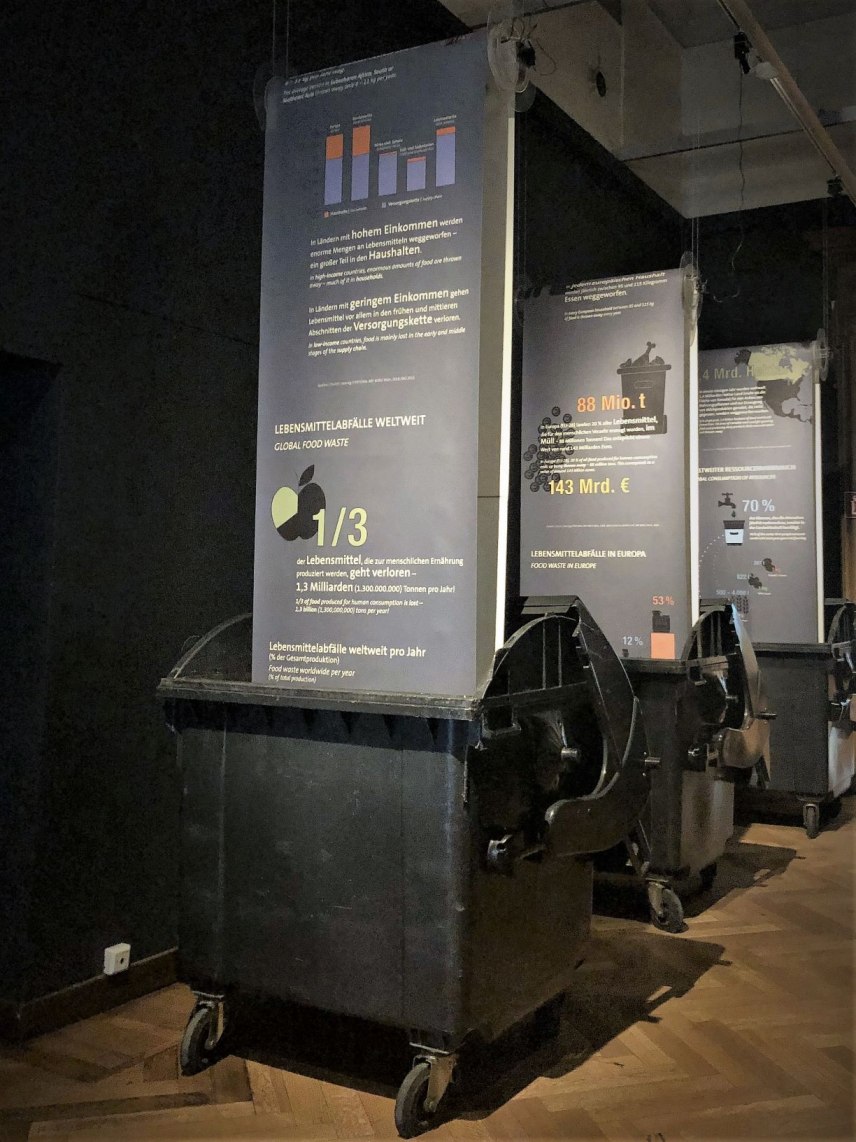
3) Natural History Museum Wien: 'Best Before - When Food Becomes Waste'
– 5. September 2021
The special exhibition “Best Before” takes a look at the reasons behind food waste. Farming, manufacturing, shops, homes, restaurants: the causes of this phenomenon are diverse – and disturbing.
Our attitude towards food waste seems to have changed over the last decades, considering that one third of the global food production ends up being thrown away. This happens at various stages of the production chain, starting with the farm and ending with us the consumers. Reasons vary from our standards of selling and consumption, storage and transport inadequacies, as well as our careless consumerism in high income countries.
The curators of the exhibition have found a way to confront us with the facts and figures surrounding food waste and food consumerism (133kg of edible food is thrown out by the average Austrian household every year), as well as with their drastic effects on our natural resources and our social systems, without disheartening us. It offers the visitor many approachable ways to become active and change cycles, starting from food sharing, to sustainable storage, food cooperations, to pickling, via dumpster diving, recipes, to changing our shopping behaviour. This exhibition's approach is a positive, encouraging and activating one.
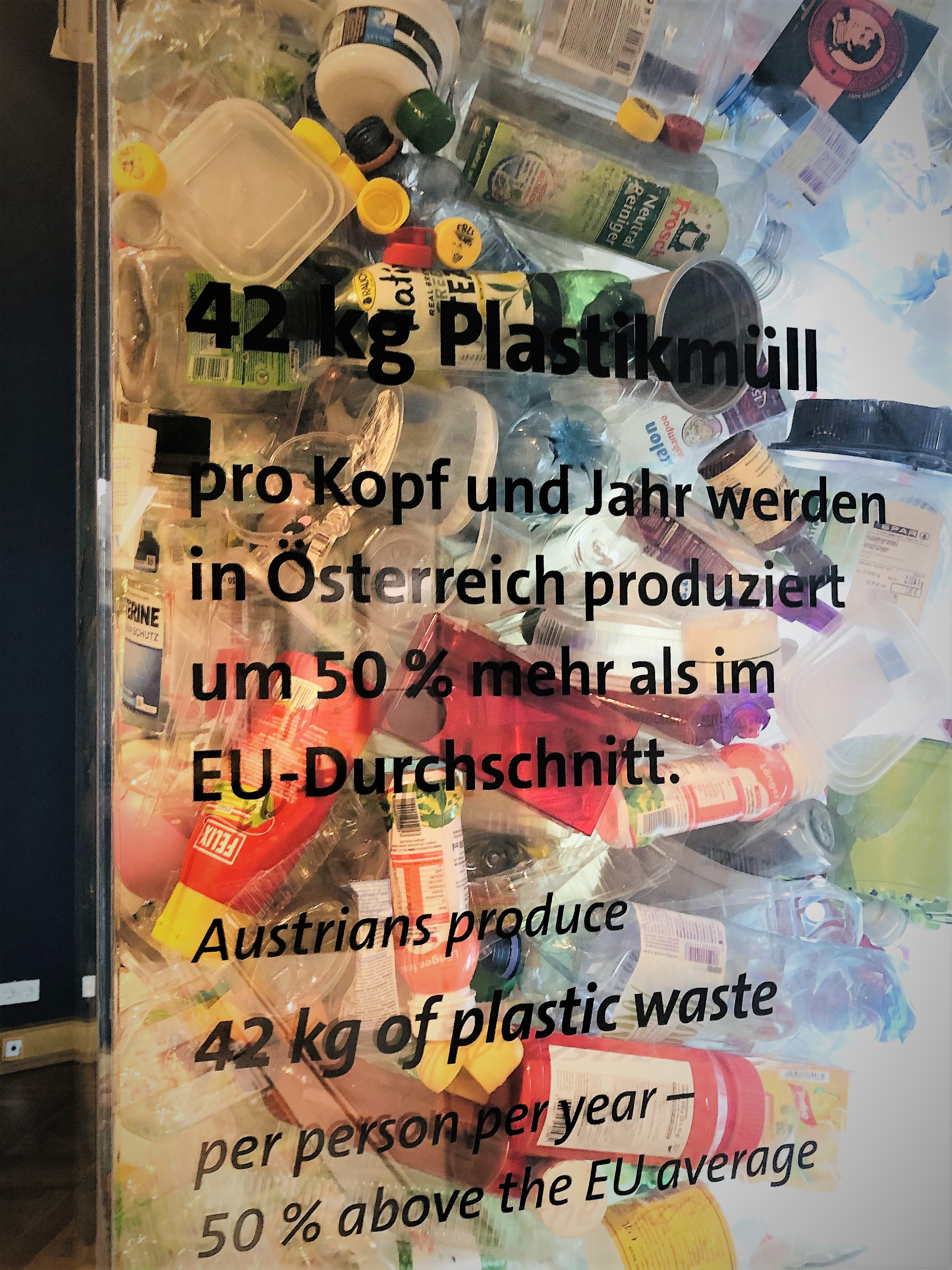
As part of the activities surrounding the exhibition a blog on the activities of the partners and the topic as a whole was created (in German) for more here. Also, take the time to check out the panel on food waste here and more on the museum’s YouTube channel.
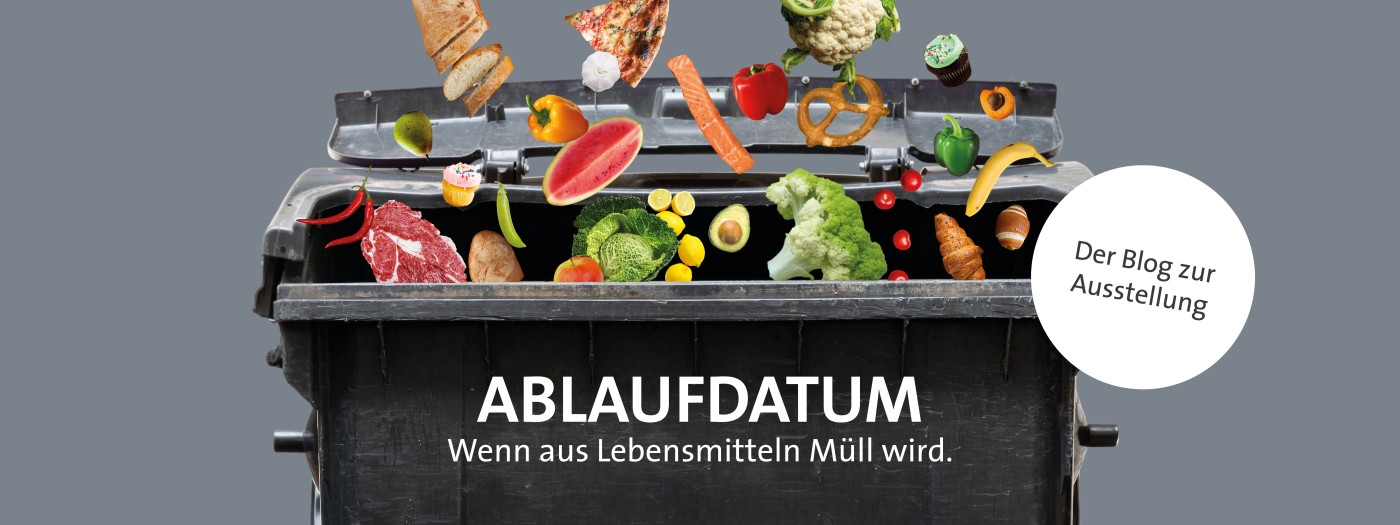
For more about reusing and borrowing materials for the design of exhibitions check out the upcoming part 2 of the series.
Not far from there in the very heart of Vienna an entirely seperate aspect was in the focus of this exhibition: the relationship between human and nature….
4) Dommuseum Wien: 'Fragile Creation'
– 3. October 2021
“Artworks from the Middle Ages to the present illustrate the complex connection between human beings and their environment. From loving care to exploitation, from menace to fascination, the relationship between people and nature is an ever-present topic—and was of existential importance long before the life-threatening consequences of global warming and pollution we are faced with today.”
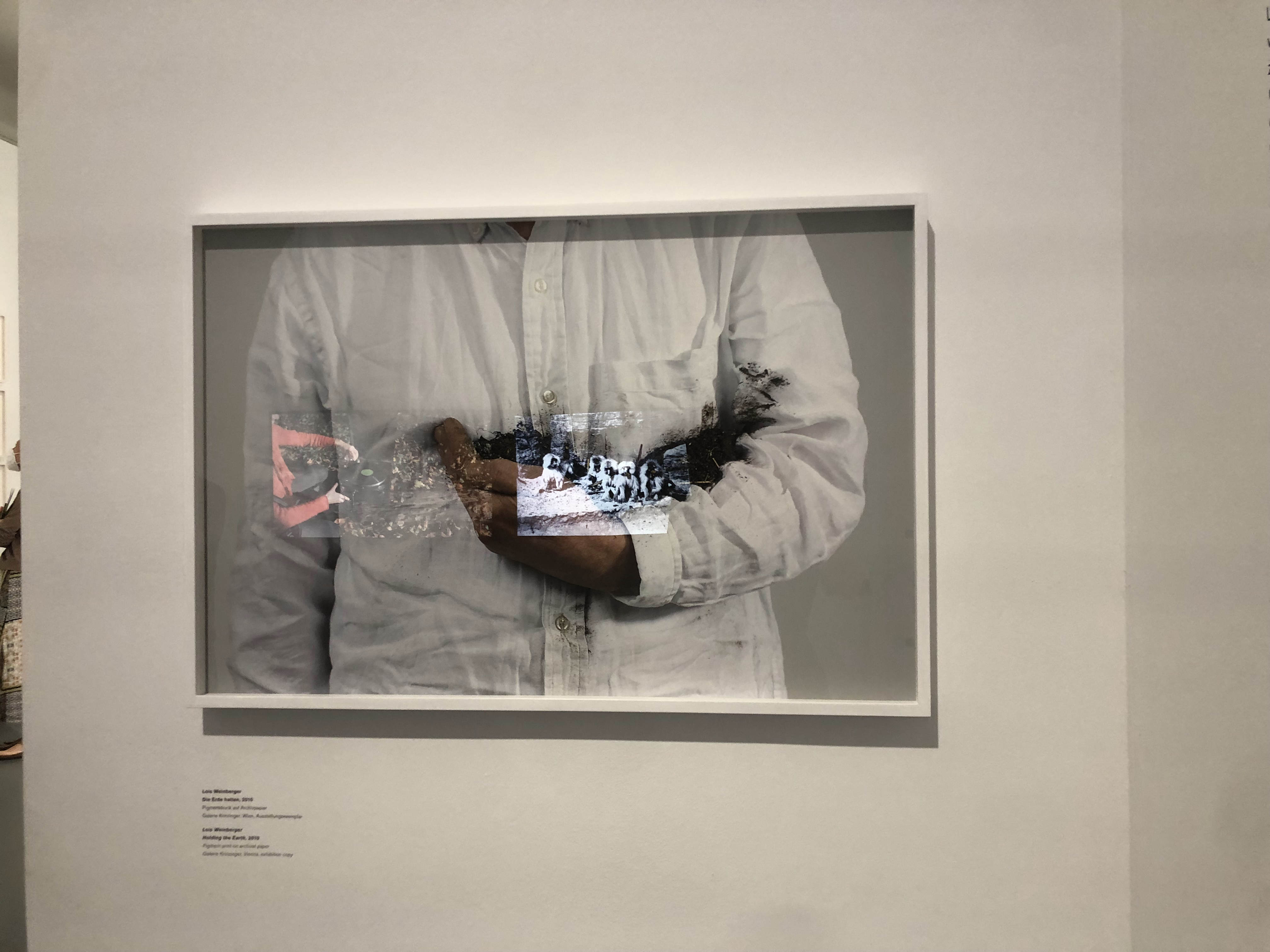
Curator: Johanna Schwanberg, Co-Curator: Klaus Speidel
At the core of this year’s annual special exhibition is the multifaceted relationship between human and nature. Even though it has a conciliatory tone at its core, the climate crisis and its effects are very much on of the central themes. Combining contemporary and conceptual art from different cultural contexts with the museum’s medieval collections, the art works exist in a dialogue with each other- creating a unique atmosphere and viewpoint. A highlight in this regard was the artwork ‘Woodland in Ruins’ by John Hilliard from 2014 and ‘The Eruption of the Vesuv’ from 1899 (Albert Bierstadt).
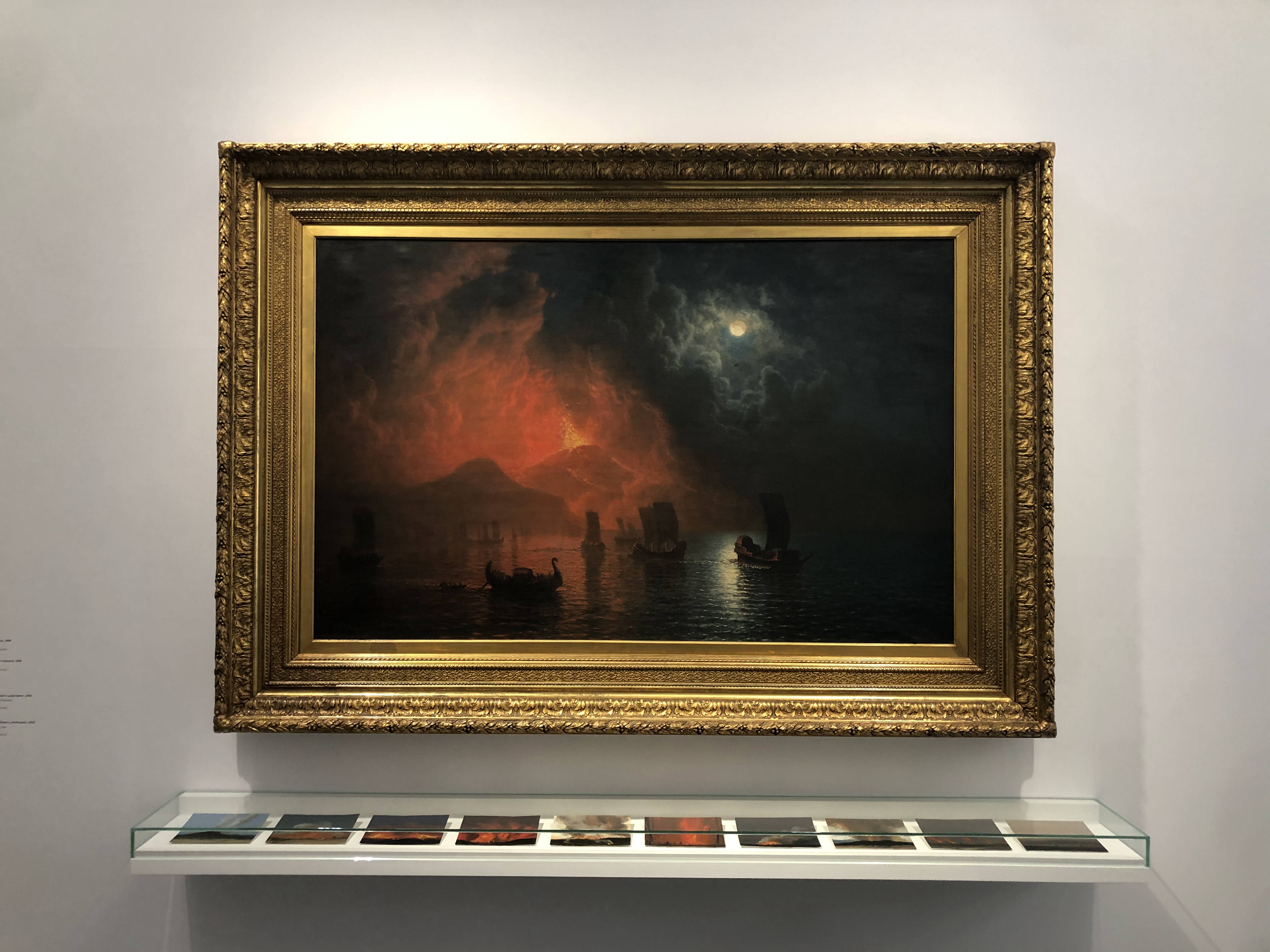
The exhibition uses little to no text (but offers a booklet as a possible accompaniment) and it seems to communicate with the visitor on a very subtle and emotional level. For the visual visitor, such as myself, this is a very enticing experience but the associative nature of the experience might not be right for the more scholarly focused.
Personally, this exhibition was the big surprise of the workshop for me. The visual subtle tone of addressing difficult and sensitive topics without negating them, as well as the focus on care, really hit the right note for me. One should however not go a miss at not mentioning more critical aspects such as the lack of reflection on the churches’ own role in colonialism (whose afterlives are a significant topic in this project and the climate discussion as a whole) and the destruction of nature.
One could also argue that it had less of an active approach but this was to be remedied by the planned additional program. The museum had planned a range of outreach programmes including a big social community gardening project, which were put on hold due to the present situation, nevertheless the pop up workshop space will be opened in the periphery of Vienna later this year.
For more insights check out the themed Saturday tours (including writing programmes, excursions, curator tours, share and care, digital quizzes, baby tours and more) here and for the catalog here.
5) PLANET LOVE.
Climate Care in the Digital Age- MAK
Vienna Biennale for Change 2021
- 03. October 2021
With its motto PLANET LOVE the VIENNA BIENNALE FOR CHANGE 2021 is dedicated to the greatest challenge of our digital age: climate care. PLANET LOVE means a fundamentally new relationship between people and planet, which aims at using the Earth’s resources considerately rather than maximizing their exploitation, and whose approach is characterized by humility, respect, and appreciation of its biological diversity and beauty.
Several of the for mentioned exhibitions (AZW, KUNSTHAUS) as well as the following MAK exhibits are part of the Vienna Biennale. Approaching the theme from a global and multi-perspective CARE and INNOVATION point of view, in cooperating visionary architecture, design, technology and visual arts projects and ideas (in the broadest sense), the MAK’s approach is a radical, positive and encouraging one.
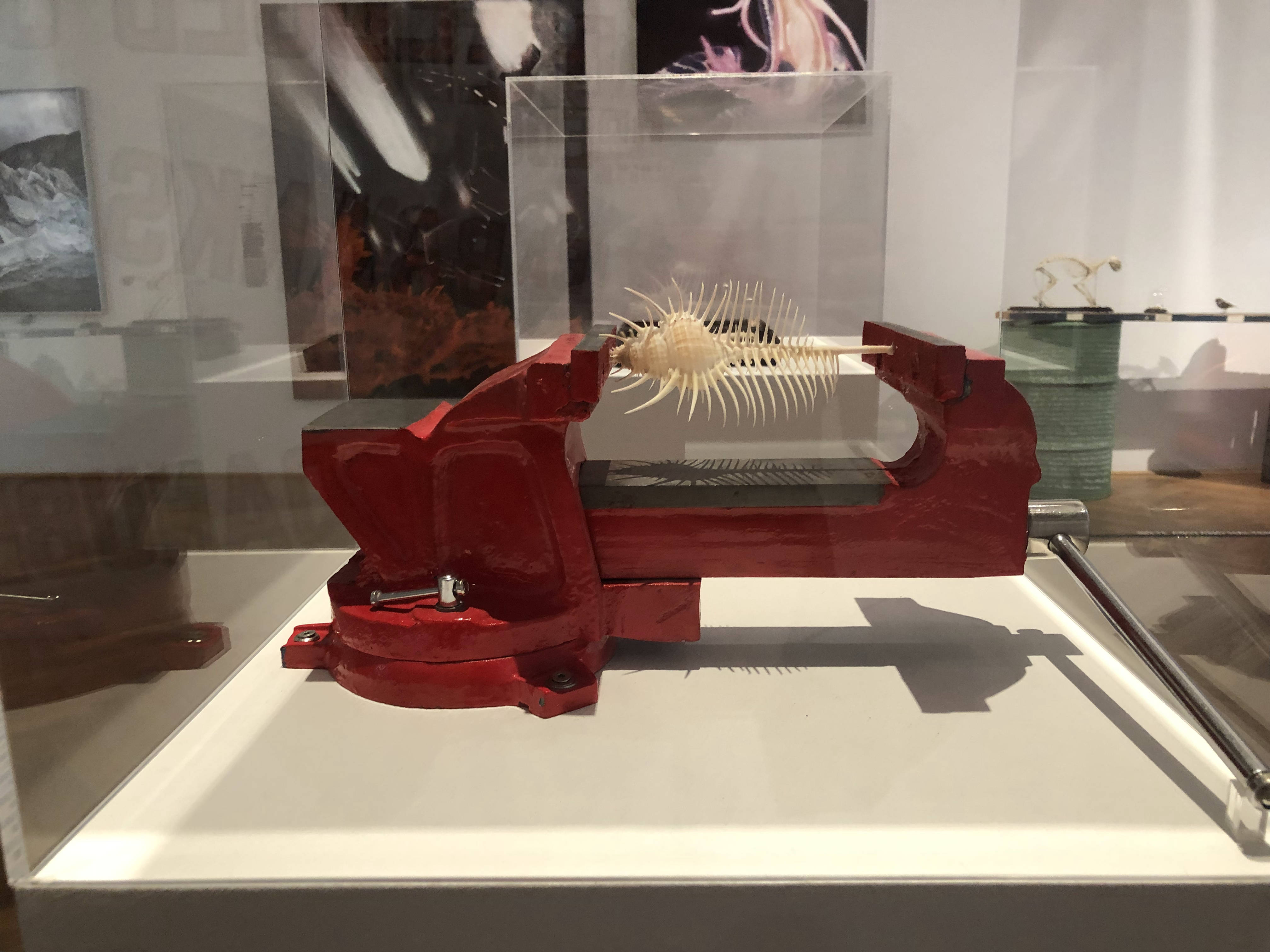
As an institution, the Museum of Applied Arts sees the need to position itself, activate and present potential solutions around the climate crisis, as one of its key responsibilities. The magnitude and the significance of the issue on a societal level, is ever apparent and the Viennale as a whole aims to offer a ‘vision of ecosocially sustainable societies and economies’. Digitalization, takes up a central role, as a cross sectoral catalyser with the potential to improve our livelihoods and quality of live as a whole. This takes into account the central role the digital plays in every area of our life but does leave out the considerable carbon-footprint caused by this sector as a whole (and our avid use of it).
For more on the Viennale here and its events.
Download Guide VIENNA BIENNALE FOR CHANGE (DE/EN)
The MAK is contributing several exhibitions (Installations and events) to the Viennale. What preceded their very broad, activating but slightly overwhelming visiting experience, though, was the very immerse and comforting visit of the installation 5a) ‘INVOCATION FOR HOPE’ (by SUPERFLUX).
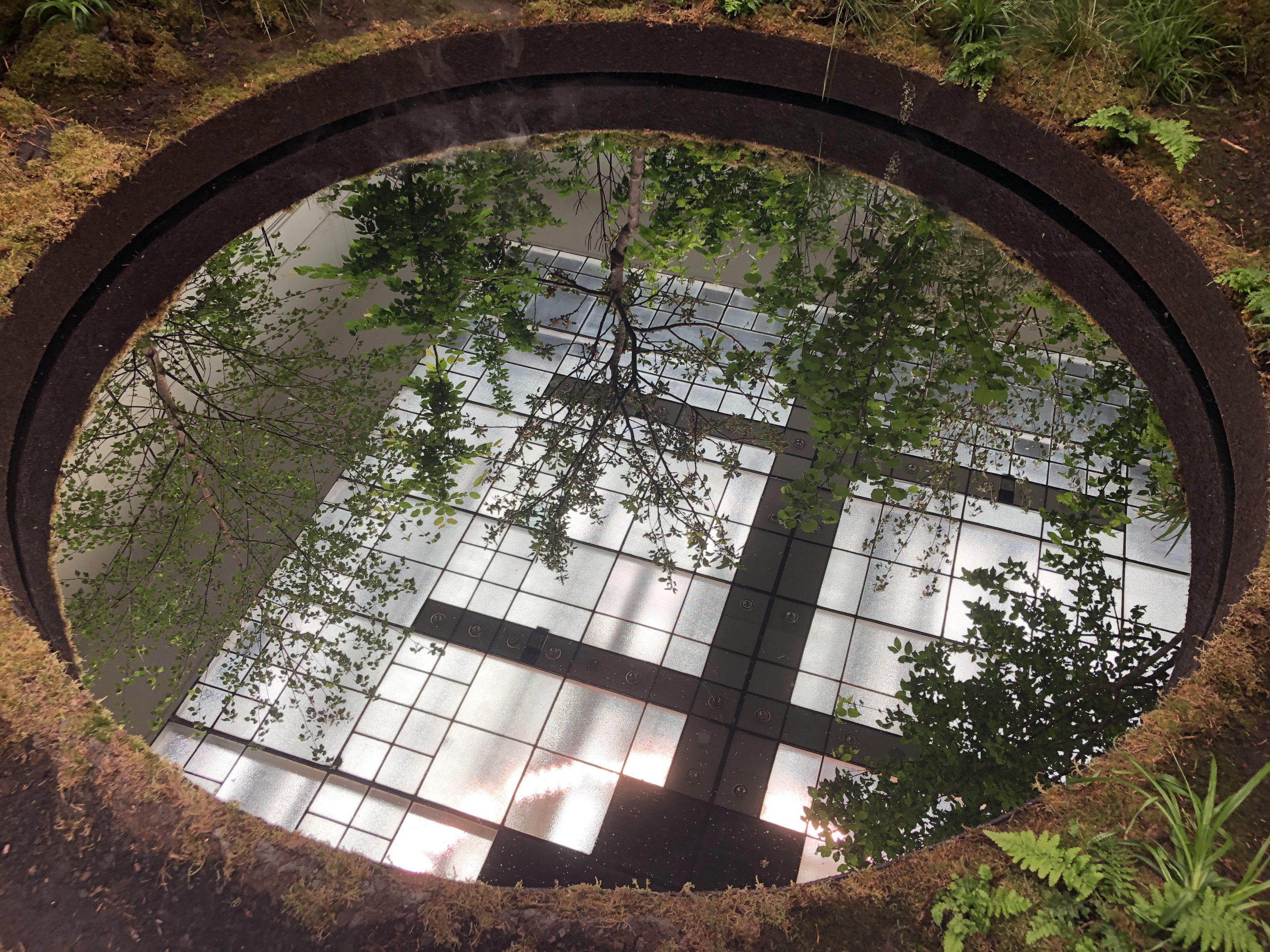
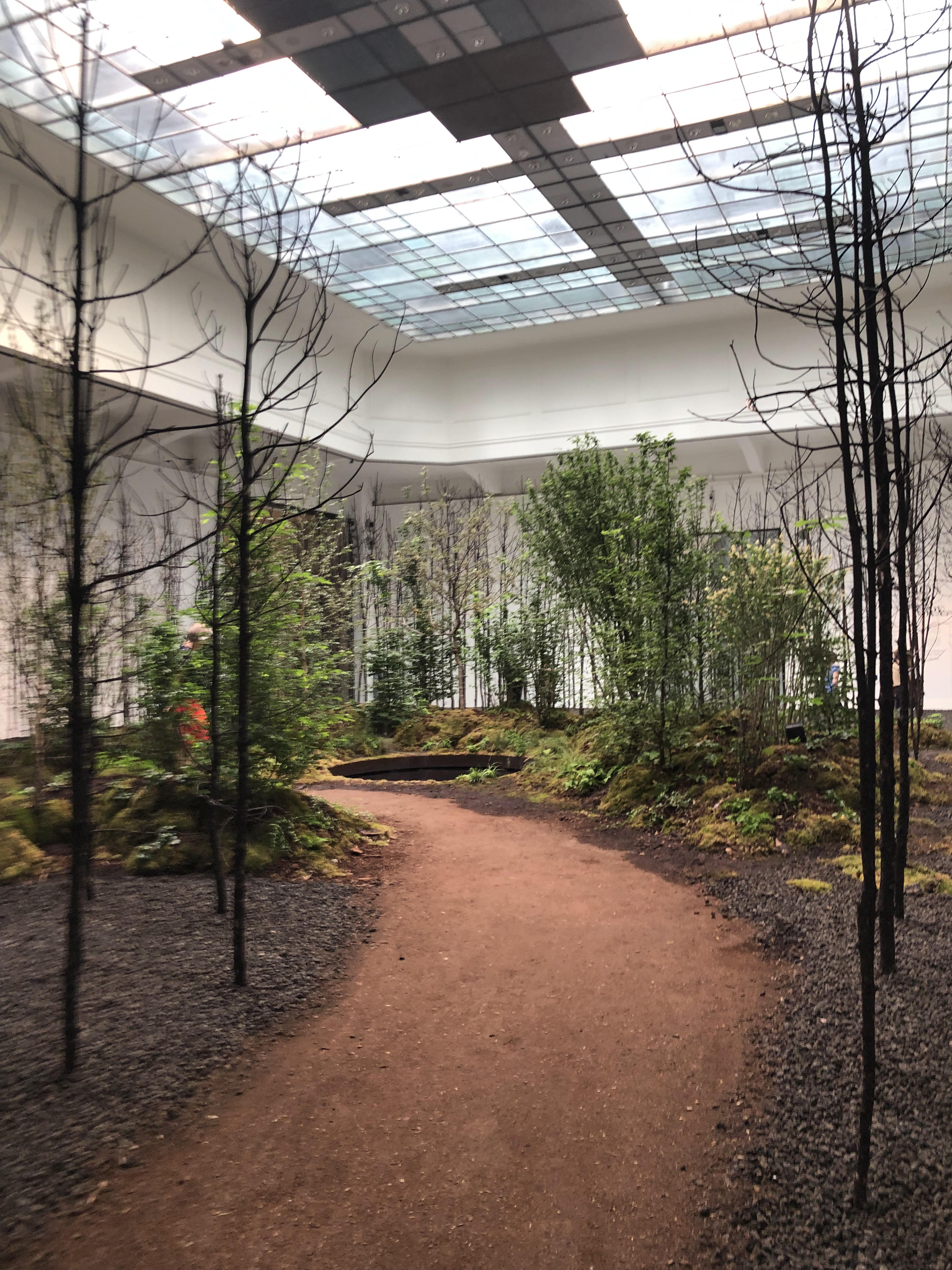
As visitors, you are initially surrounded by hundreds of recently burned trees until you reach a clearing with a reflective (literally) pool, diverse plants and sounds of life. Reminding us of the need to move away from an anthropocentric view on the world towards a shared, among the many species of the world, future. As a starting point for all the presented ideas to come, it seemed to me like a reminder what we should be working towards and what we need more understanding for and rethinking of - our relationship with nature and our role as human beings in this fragile system.
The central exhibition and main contribution to the Vienna Biennale is 5b) ‘CLIMATE CARE Reimagining Shared Planetary Futures’. In three chapters it showcases a sheer overwhelming amount of projects by designers, architects, scientists, organisations and more, that offer ideas and solutions for the various issues of the climate crisis- in virtually every field of design. Presenting concepts and active projects focused on sustainable architecture, ecological knowledge, increase of biodiversity, urban gardening (and mushroom growing)- and ecological food growing as a whole, to sustainable transport solutions, education around climate care (such as video games), green energy, fashion design and much more. It is hard to highlight a specific object or area but I must underline how I impressed I was, by the versatility of projects (and fields) and the innovative spirit showcased.
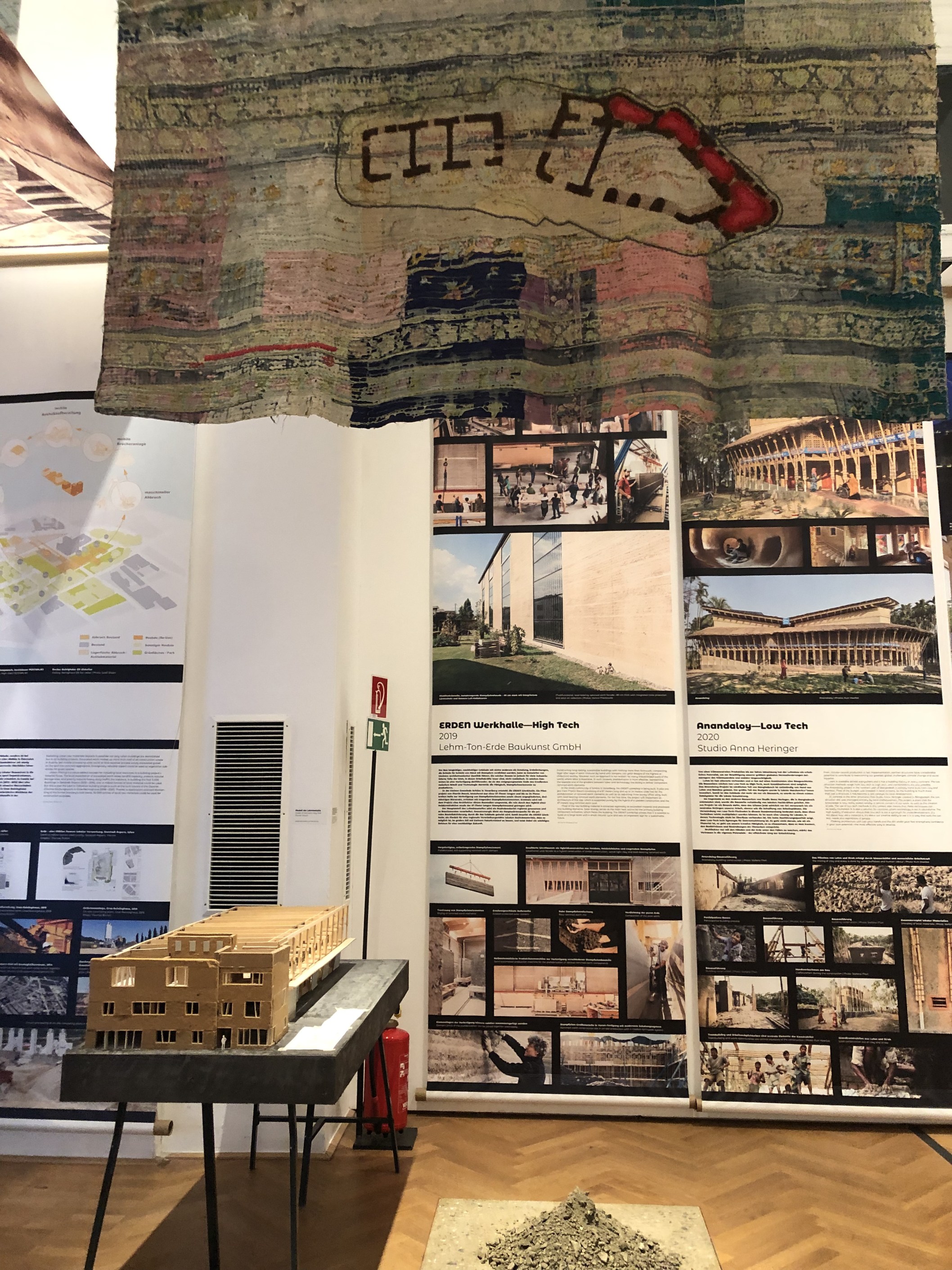
Various art works and projects also aim to raise awareness of the gravity of the issue and responsibility we bear. What most struck me in this regard was the archive of everyday and personal objects from places that could disappear, if we continue on this path.
This all might sound overwhelming and can be but the design and presentation of the exhibition leaves it up to the visitor, where and what they want to dive into more deeply and engage with. If cultural instituions and representatives have asked themselves what role, they should and can play in this discourse- this exhibition answers 'a key, central and versatile one'.
My compliments go out to the designers and curators, for assembling this mirage of projects, for presenting them thus, and for leaving me as a visitor activated, and encouraged.
Curators: Anab Jain, Designer and Professor of Design Investigations, University of Applied Arts, Vienna; Hubert Klumpner, Architect and Professor of Architecture and Urban Design, ETH Zurich; Marlies Wirth, Curator Digital Culture and MAK Design Collection; Christoph Thun-Hohenstein, MAK General Director and Head of the VIENNA BIENNALE
Other Viennale exhibitions at the MAK: 'EAT LOVE Tomorrow’s Food and Food Spaces', 'FOSTER The Soil and Water Residency' and 'CLIMATE PANDEMICS Dark Euphoria'.
And for more of the MAK events here as well as about their creative laboratory, including their events and workshops here
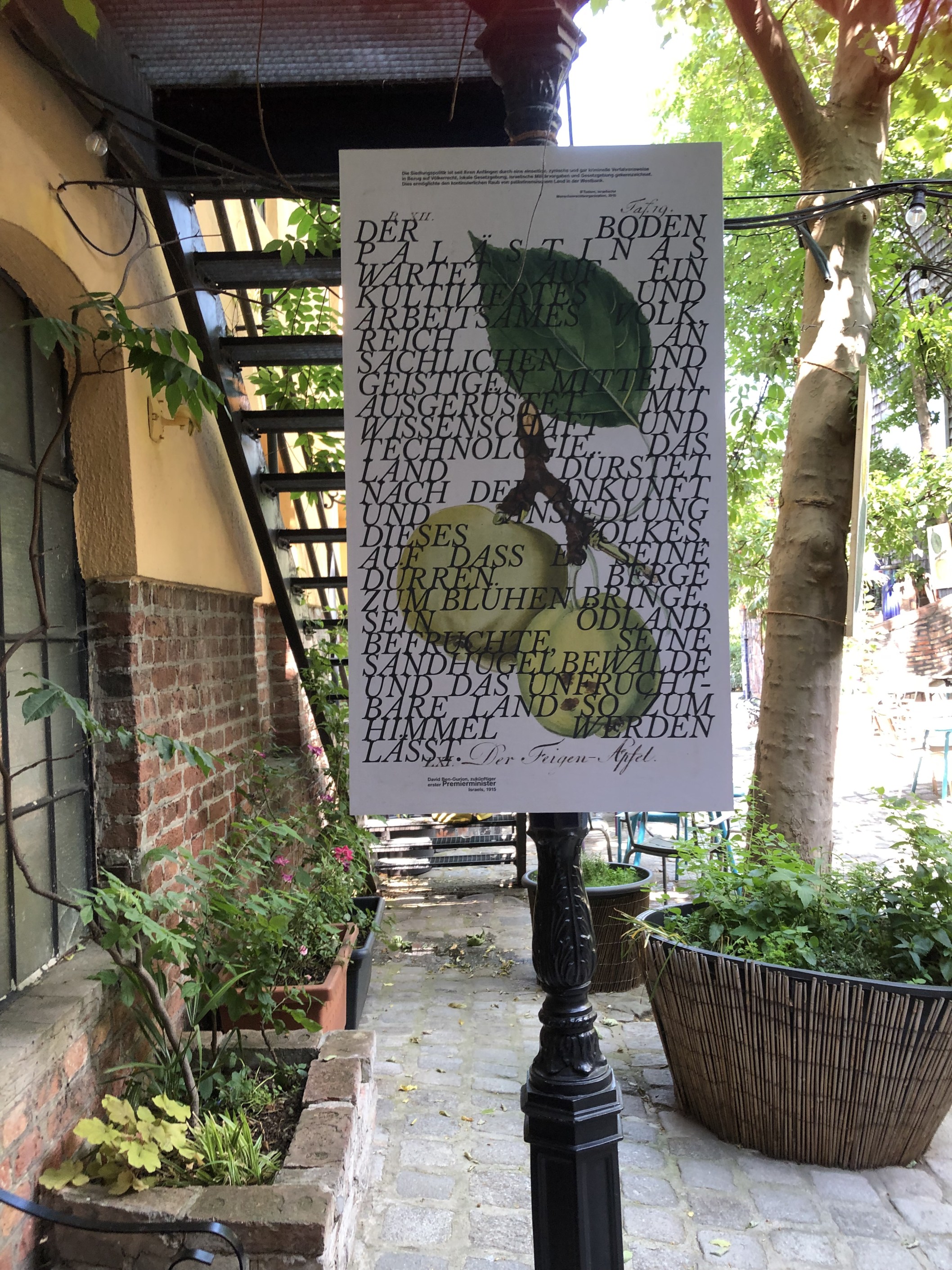
The final visit on our vast tour took as to the first green museum of Vienna (more on this in part 2 of the series) the KUNST HAUS WIEN and Ines Doujaks exhibition 6) Landscape Painting – Land grabbing and destruction of biodiversity :
‘Closely linked to colonialism and highly topical is the theme of "land grabbing". Doujak deals with the appropriation of land in a work in public space. As a nature trail, she installs panels with historical representations of apple varieties in the inner courtyard and in the surrounding space of KUNST HAUS WIEN. These refer to the destruction of biodiversity associated with land grabbing, for example through monocultural agriculture. Original quotes from land robbers are covered on the illustrations.
With the title of the exhibition, Ines Doujak refers to the subjective, yet culturally shaped perception of nature and to the artistic genre of landscape representation as a form of appropriation with the means of aesthetics.’
The beautiful and cozy
athmosphere of the museum’s courtyard offers an unsuspecting setting and Ines
Doujaks paintings initially seem almost decorative. Only upon
drawing closer and reading the quotes, representative of the ongoing, global and systematic
appropriation of land and displacement of populations and the destruction of landscapes
and homes, we as visitors are confronted with the longevity and depth of this
issue. The power imbalance between rich industrialised countries and those
suffering the consequences of this grabbing becomes all too apparent.
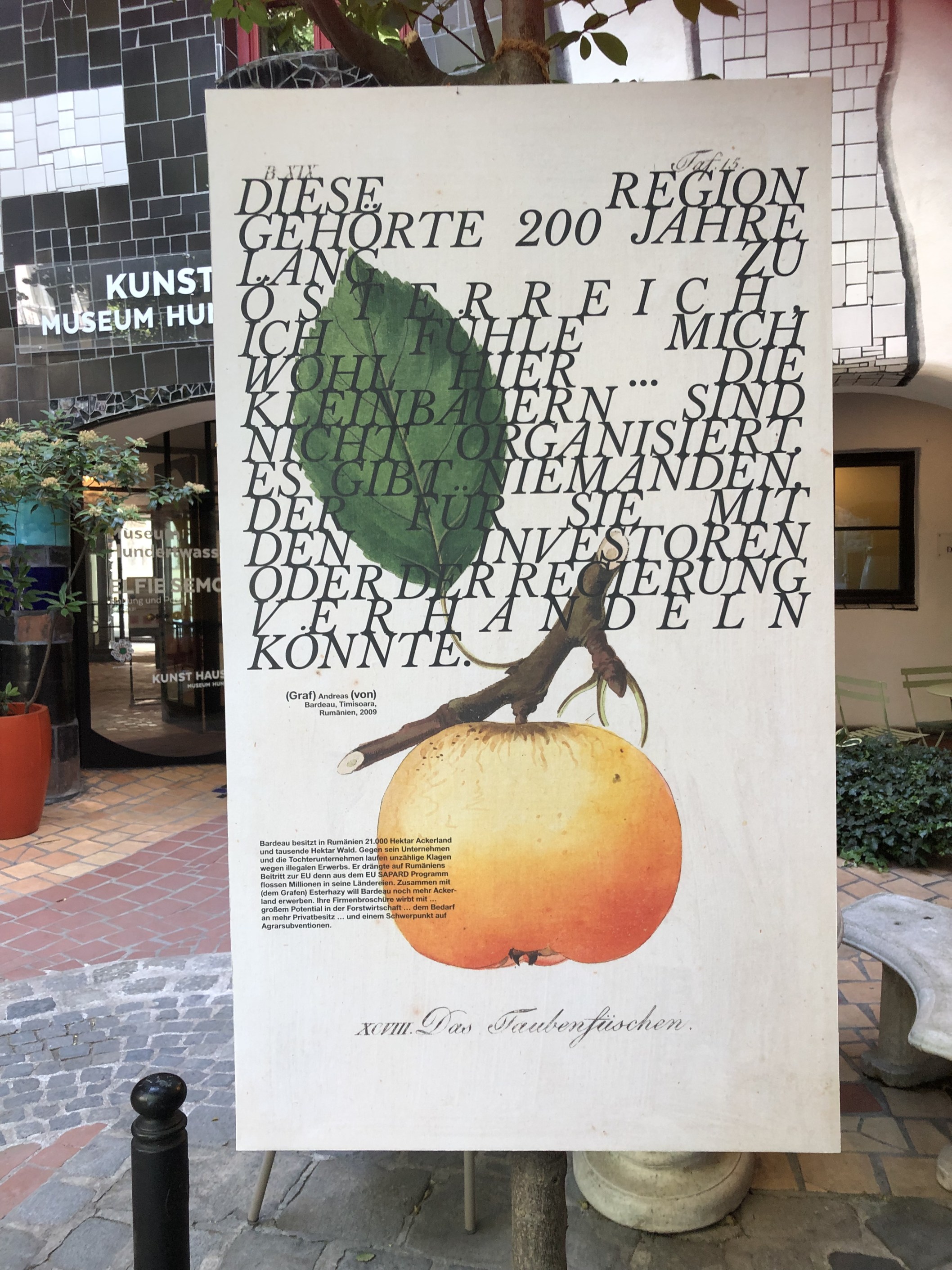
In the installation 6a) Seeds Renamed – Renaming plants with biographies of revolutionary woman, the artist highlights how the naming of plants after their ‘discoverers’ in the 18th and 19th century was a deeply colonial and patriarchal practice of systemizing nature. As a reaction to this practice Doujak renamed the ‘Nature Collection’ of 116 materials, she had inherited, names of female revolutionaries through the ages. The short biographies, compiled and written by the artist, are available to the visitor via a QR Code on the seed containers. This, to me, is an installation that uses simple means of presentation that, nevertheless, left me with a lot food for thought and re-evaluation to be done.
As part of the
museum’s green programming (focusing on sustainable and environmental issues)
the KUNST HAUS WIEN is the host of the interdisciplinary Future Talks : Climate
X Change, which highlights the Fridays
for Future themes and offers strategies for a more sustainable future. The last installment of
the series focused on 'Land grabbing', its disastrous effects and what is being
done in the fight against it. Re-watch it (in German) here.
Photos by Nora Haas